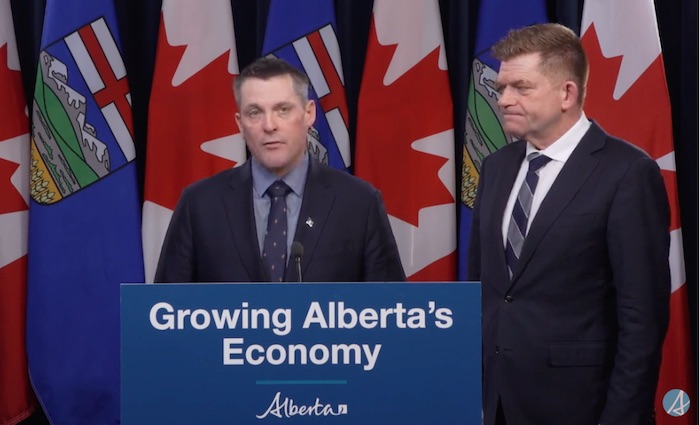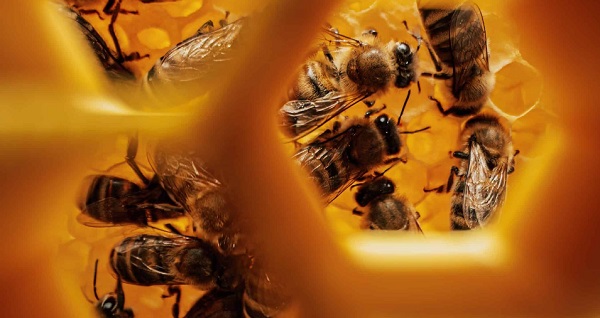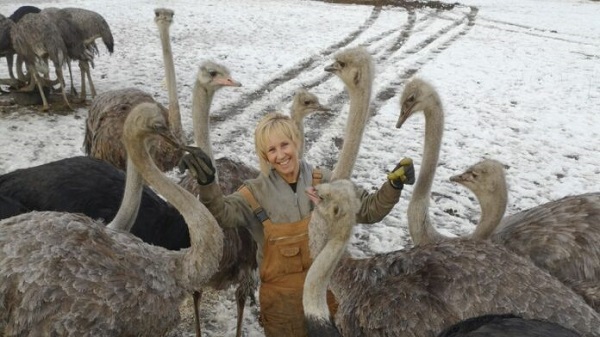Agriculture
Province announces massive commitments to rural Alberta

Building up the rural Alberta economy
Alberta’s government has unveiled a plan to drive economic growth and address challenges unique to rural communities.
Rural Alberta is a driving force in the economy and the new Economic Development in Rural Alberta Plan will complement current government initiatives while supporting diversification and job opportunities in rural communities.
The five-year plan focuses on key issues in rural Alberta, including economic development-enabling infrastructure, rural business supports and entrepreneurship, support for labour force and skills development, marketing and promoting rural tourism, and rural economic development capacity building.
“Rural Albertans face unique economic barriers and challenges that require a different approach than their urban neighbours. The Economic Development in Rural Alberta Plan charts a path forward that will address these issues and build on our commitment in Budget 2022 to support sustainable growth and diversification in rural Alberta.”
As one of the first tangible actions under the plan, the government has committed $125,000 to each of the eight regional economic development alliances to support long-term economic prosperity in their respective regions.
“With strengths in oil and gas, agriculture and forestry, tourism and emerging technologies, Alberta’s rural and northern communities are the backbone of our province’s economy. Actions identified in this plan will benefit rural and northern Albertans for years to come, including providing additional support to Alberta’s network of regional economic development alliances to fuel further economic growth and prosperity across our province.”
The Announcement
Engaging with rural Albertans
The plan was created after a year of consultations. Beginning in fall 2021, Alberta’s government held targeted sessions with rural Alberta businesses and communities, in addition to Indigenous communities, to identify the specific challenges and possible solutions facing their regions.
In total, government hosted 23 virtual engagement sessions with more than 370 rural Albertans, businesses and communities, receiving 3,500 comments. At the same time, an online survey was conducted, which received an additional 919 responses.
Feedback from the sessions and the online survey helped develop the plan’s vision, guiding principles and strategic directions. These were refined and validated through a second phase of targeted engagement with the same individuals and groups in summer 2022.
“Regional economic development alliances are strategically structured to collaborate with governments to address key issues in rural Alberta. Our first step is to identify and improve economic development and enable infrastructure to support investment and growth in rural Alberta. Once we initiate this step, we can further support rural businesses, increase the labour force and market a stronger rural Alberta to Canada and the rest of the world. We look forward to moving forward with the Economic Development in Rural Alberta Plan and continued collaboration with the Government of Alberta.”
“As a leading advocate for our province’s towns and villages, Alberta Municipalities is pleased to see the provincial government focus on the unique needs of Alberta’s smaller and more remote communities. We welcome efforts to grow and diversify our province’s economy, including renewed support for regional economic development alliances.”
“For well over a century the Rural Municipalities of Alberta has helped rural municipalities achieve strong, effective, local government. The Economic Development in Rural Alberta Plan supports our mission to strengthen rural Alberta and cultivate strategic and collaborative partnerships. This plan starts today and is designed for the rural Alberta of tomorrow.”
Quick facts
- The plan focuses on five key strategic directions:
- Identifying and improving economic development-enabling infrastructure to support investment and growth in rural Alberta.
- Advancing entrepreneurship capacity and a culture of innovation across rural Alberta.
- Enabling skills development in rural communities to enhance workforce capacity today and for the future.
- Enhancing rural Alberta’s reputation and capacity as a diverse tourism destination.
- Enhancing rural economic development through regional and targeted capacity building.
- The plan will complement a number of initiatives that demonstrate the government’s commitment to building healthy and prosperous communities across rural Alberta, including:
- Up to $390 million over four years as part of the Alberta Broadband Strategy to eliminate the digital divide for all Albertans.
- Nearly $933 million for irrigation infrastructure in partnership with nine irrigation districts to expand and modernize Alberta’s irrigation infrastructure.
- $78 million to fund 133 active capital maintenance and renewal projects in rural Alberta communities.
- A $59-million investment to expand veterinary medicine at the University of Calgary, doubling the number of seats in the program to address a critical shortage of large animal veterinarians in rural Alberta.
- $70 million for the Film and Television Tax Credit that will attract major productions to the province, diversifying the economy and creating thousands of new jobs.
- More than $8 million through the Indigenous Opportunities Corporation to support Indigenous communities’ participation in commercially viable resource projects to support rural economic growth.
Agriculture
Unstung Heroes: Canada’s Honey Bees are not Disappearing – They’re Thriving

Canada’s Bee Apocalypse began in 2008. That was the year the Canadian Association of Professional Apiculturists (CAPA) first reported unusually high rates of winter bee colony losses. At 35 percent, the winter die-off that year was more than twice the normal 15 percent rate of attrition.
“Successive annual losses at [these] levels … are unsustainable by Canadian beekeepers,” the CAPA warned. This set off an avalanche of dire media reports that now appear on a regular basis. Among the many examples over the years: Huge Honey Bee Losses Across Canada” and “Canada’s bee colonies see worst loss in 20 years”. As each of these stories reminds readers, the disappearance of honey bees will doom our food supply, given their crucial role in pollinating crops including canola, soyabeans, apples, tomatoes and berries.
This year the black-and-yellow striped Cassandras are back at work, with headlines shouting “Scientists warn of severe honeybee losses in 2025” and “The Bees are Disappearing Again”. If it’s spring, the bees must be disappearing. Again.
It is, however, mathematically impossible for any species to be in an allegedly continuous and calamitous state of decline over nearly two decades and never actually reduce in number. For despite the steady supply of grave warnings regarding their imminent collapse, Canada’s bees are actually buzzing with life.
In 2007, according to Statistics Canada, there were 589,000 honey bee colonies in Canada,; in 2024, they reached 829,000, just shy of 2021’s all-time high of 834,000. Figuring a conservative summertime average of 50,000 bees per colony, that means there are approximately 12 billion more honey bees in Canada today than when the Bee Apocalypse first hit.
As for beekeepers, their numbers have also been growing steadily, and now stand at 15,430 – the most recorded since 1988. As CAPA’s report acknowledges, “the Canadian beekeeping industry has been resilient and able to grow, as proven by the overall increase in the number of bee colonies since 2007 despite the difficulties faced every winter.”
How is this possible? As is usually the case where there’s a need to be filled, the market holds the answer.
It is true that Canadian honey bees face a long list of threats and challenges ranging from mites and viruses to Canada’s harsh winters. It is also true that they perform a crucial service in pollinating crops, the value of which is estimated at $7 billion annually. However, this underscores the fact that bees are a livestock bred for a particular agricultural purpose, no different from cattle, chickens or pen-raised salmon. They are a business.
And in spite of its alleged status as an environmental totem, the honey bee isn’t even native to North America. It was first imported by European settlers for its honey-making abilities in the 1600s. Since then, it has been cultivated with deliberate commercial intent – allowing it to outcompete native pollinators such as bumble bees and butterflies even though it is poorly suited to the local winter. (This highlights the irony of all those native-plant pollinator gardens virtuously installed in neighbourhoods across Canada that end up supporting an invasive honey bee population.)
The significance of the bee economy means that when a beehive collapses over the winter for whatever reason, beekeepers have plenty of motivation to regenerate that colony as swiftly as possible. While hives can create their own queens over time, this can be a slow process given the cold Canadian climate. The better option is to simply buy a new queen from a warmer country.
In 2024, Canada imported 300,000 queens worth $12 million, mostly from the U.S., Italy, Australia and Chile. That works out to $40 each. In a miracle of nature, each of these new queens can lay up to 2,500 eggs a day, and each egg takes just two to three weeks to reach full maturity as a worker or drone. It is also possible to import entire “bee packages” that include a queen and 8,000 to 10,000 bees.
As a result, even a devastating 50 percent winter loss rate, something that has occurred only rarely in Canada in individual provinces and never nationally, isn’t necessarily fatal to any beekeeping operation. The beekeeper can purchase imported queens in April, split their existing colonies and be back in business by May or June.
And regardless of the honey bee’s apparent difficulties with Canada’s unforgiving weather (efforts are ongoing to breed a hardier Canadian variant), there’s no shortage of bees worldwide. Earlier this year, the German statistical agency reported the global beehive count rose from 69 million in 1990 to 102 million in 2023. Another study looking back to 1961 by New Zealand researchers found the number of honey bee colonies has “nearly doubled” over this time, while honey production has “almost tripled.” As the New Zealand report observes, “Headlines of honey bee colony losses have given an
impression of large-scale global decline of the bee population that endangers beekeeping, and that the world is on the verge of mass starvation.” Such claims, the authors note, are “somewhat inaccurate.” In truth, things have never been better for bees around the world.
Here in Canada, the ability to import queens from other countries, together with their prodigious reproductive capabilities, backstops the amazing resiliency of the bee industry. Yes, bees die. Sometimes in large numbers. But – and this is the bit the headlines always ignore – they come back. Because the market needs them to come back.
If there is a real threat to Canada’s bee population, it’s not environmental. It’s the risk that unencumbered trade in bees might somehow be disrupted by tariffs or similar bone-headed human interventions. Left on their own, bees have no problem keeping busy.
The longer, original version of this story first appeared at C2CJournal.ca
Agriculture
Canada Greenlights Mass Culling of 400 Research Ostriches Despite Full Recovery from Bird Flu Months Ago

 Nicolas Hulscher, MPH
Nicolas Hulscher, MPH
Federal court upholds CFIA’s reckless cull order—setting a dangerous precedent for the unscientific mass depopulation of genetically important animals.
In March, I interviewed Katie Pasitney of Universal Ostrich and Connie Shields to discuss the alarming implications of the Canadian Food Inspection Agency (CFIA) order to cull 400 research ostriches at Universal Ostrich Farm in British Columbia over bird flu:
Canada Orders Mass Culling of 400 Research Ostriches Over Bird Flu, Refuses to Test Surviving Birds for Natural Immunity
·The Canadian Food Inspection Agency (CFIA) has ordered the culling of 400 ostriches at Universal Ostrich Farm in British Columbia, citing concerns over H5N1 bird flu. However, this decision is not based on sound science and could have serious consequences for both food security and medical research.
Universal Ostrich Farm is a research facility focused on studying the unique antibody-producing capabilities of ostriches. Their research has demonstrated potential in neutralizing viruses, bacteria, and even COVID-19, making it an important contribution to medical science.
In December 2024, the CFIA claimed that two deceased ostriches—which had been lying outside for over 16 hours—tested positive for H5N1 via PCR testing. Just 41 minutes after receiving these results, the CFIA signed an order to cull the entire flock.
The CFIA initially granted the farm an exemption, recognizing the birds as “genetically important.” Later, without clear justification, they reversed this decision, ordering their destruction.
Despite the importance of this research, the CFIA has refused to conduct further testing on the birds and has banned the farm from conducting its own tests, under threat of heavy fines and possible imprisonment. Why is the Canadian government refusing to study the potential antibodies ostriches have developed against H5N1 bird flu?
On January 31, 2025, a court granted a temporary stay of execution, halting the cull. However, the CFIA is appealing this decision, which means the culling could still proceed.
Today, we have received news that the reckless mass cull order will proceed despite their ostriches having already recovered months ago and developed natural immunity against H5N1:

Official Announcement: Federal Court Decision in Universal Ostrich Farms Inc. v. Canadian Food Inspection Agency
Dear friends and supporters,
We are absolutely devastated to share today’s Federal Court decision, issued on May 13, 2025. The court ruled in favour of the Canadian Food Inspection Agency (CFIA), upholding their order to destroy our beloved ostriches and rejecting our plea to save them.
The court’s decision accepted the CFIA’s justification under the Health of Animals Act and their use of the Stamping-Out Policy, which mandates the destruction of animals to control disease outbreaks, regardless of their health status. The court confirmed the CFIA’s approach, prioritizing trade obligations over the welfare of our animals.
In addition, we’ve been ordered to pay $15,000 in CFIA’s legal costs. You can read the full decision here: (2025 FC 878). https://saveourostriches.com/wp-content/uploads/2025/05/JR-T-294-25-and-T-432-25-Final.pdf
We are heartbroken by this outcome and uncertain about the future of our farm. As we navigate this incredibly difficult time, we ask for your patience and continued support. If you are able, please consider making a donation to help us manage the financial and emotional toll this has taken.
Thank you,
Universal Ostrich Farm
http://SaveOurOstriches.com
This deeply misguided decision sets a dangerous precedent for the Canadian government to recklessly depopulate animals at will.
By upholding the CFIA’s reckless cull order, despite the ostriches’ recovery and natural immunity, the court has prioritized trade protocols over scientific inquiry, animal welfare, and the advancement of life-saving medical research.
Epidemiologist and Foundation Administrator, McCullough Foundation
www.mcculloughfnd.org
Please consider following both the McCullough Foundation and my personal account on X (formerly Twitter) for further content.
-

 COVID-1919 hours ago
COVID-1919 hours agoOntario man launches new challenge against province’s latest attempt to ban free expression on roadside billboards
-

 Energy1 day ago
Energy1 day agoThis Canada Day, Celebrate Energy Renewal
-

 Business2 days ago
Business2 days agoWhile China Hacks Canada, B.C. Sends Them a Billion-Dollar Ship Building Contract
-

 Alberta18 hours ago
Alberta18 hours agoAlberta Next Takes A Look At Alberta Provincial Police Force
-

 Alberta2 days ago
Alberta2 days agoSo Alberta, what’s next?
-

 Bjorn Lomborg2 days ago
Bjorn Lomborg2 days agoThe Physics Behind The Spanish Blackout
-

 Alberta20 hours ago
Alberta20 hours agoCanadian Oil Sands Production Expected to Reach All-time Highs this Year Despite Lower Oil Prices
-

 Business22 hours ago
Business22 hours agoPotential For Abuse Embedded In Bill C-5







